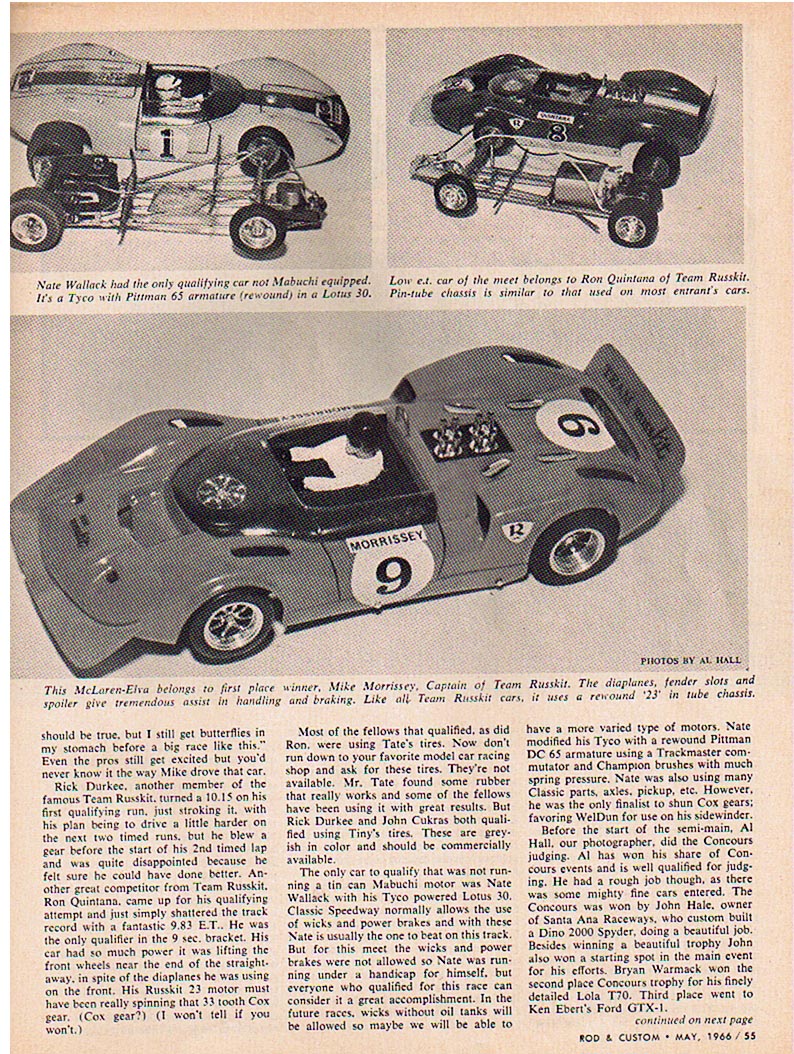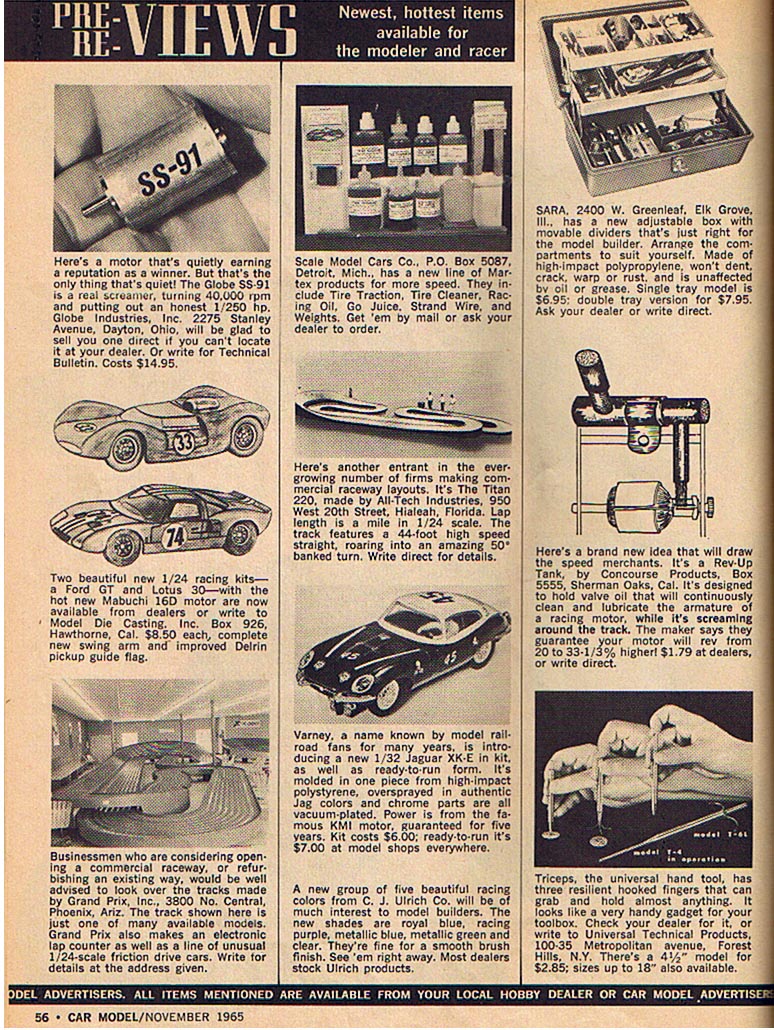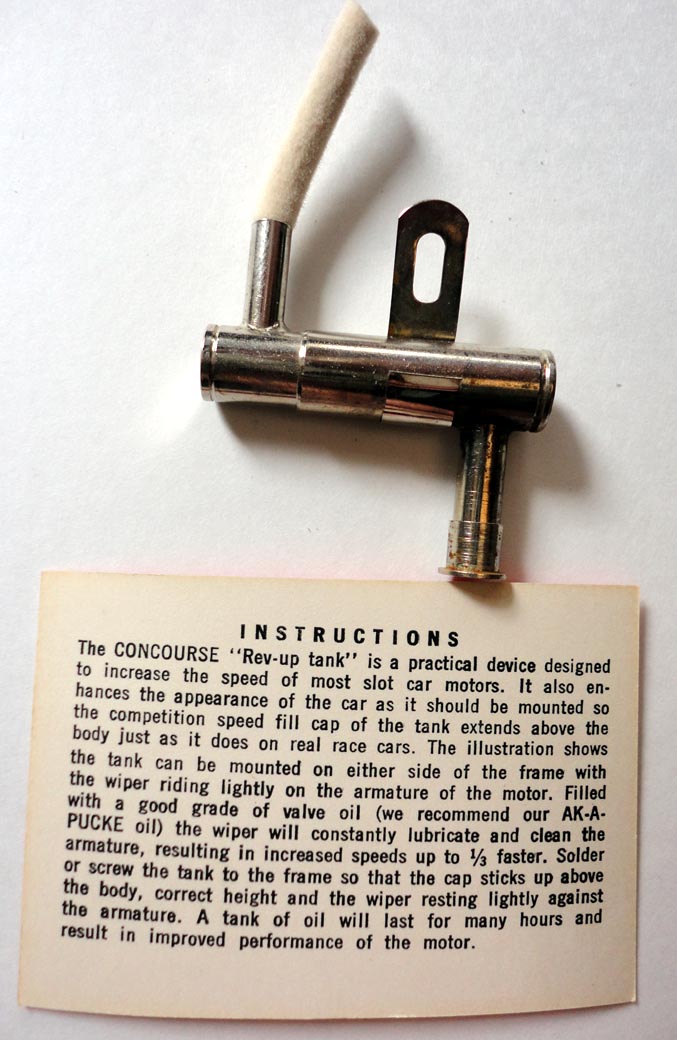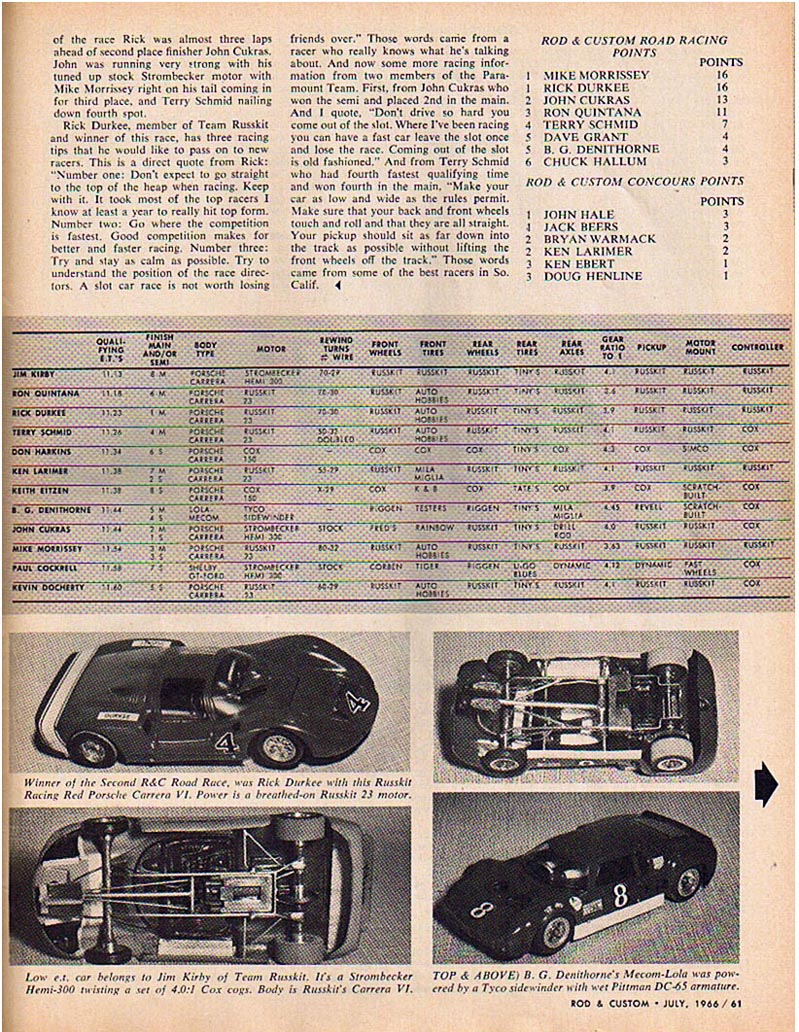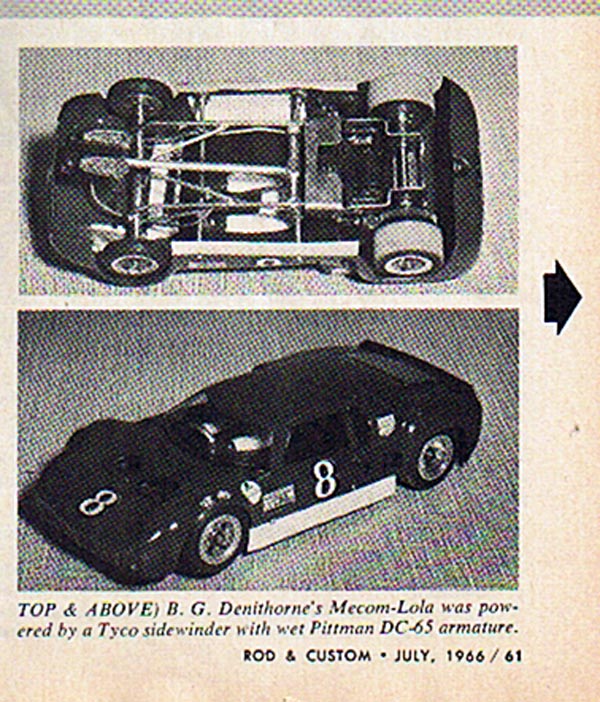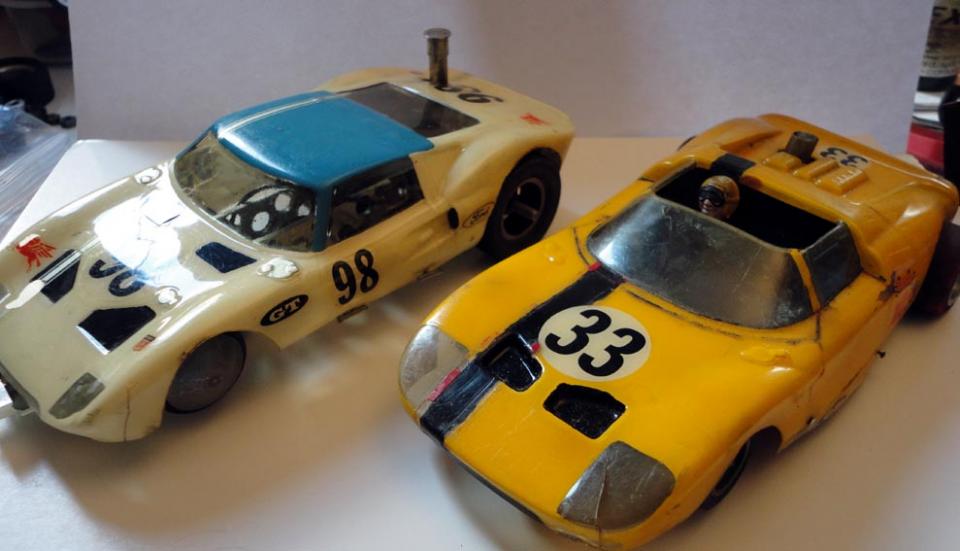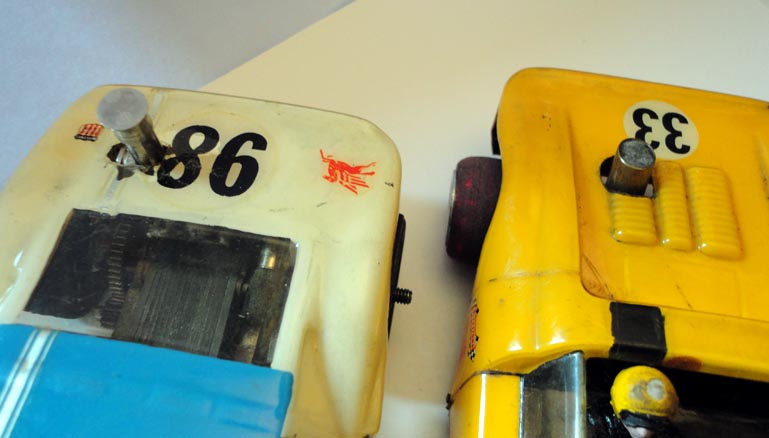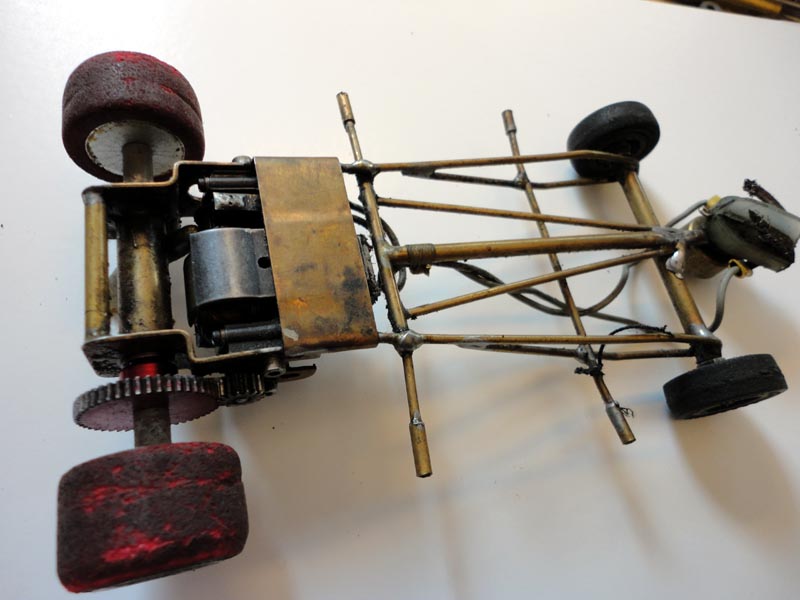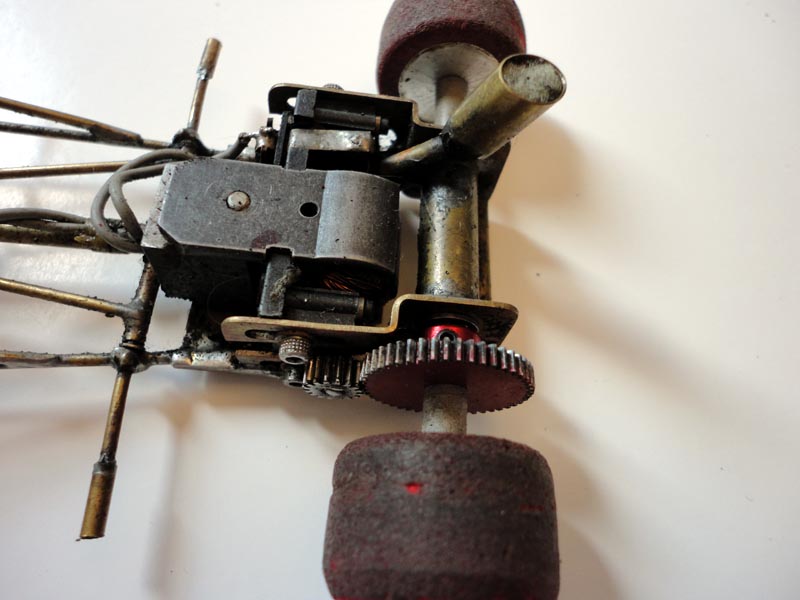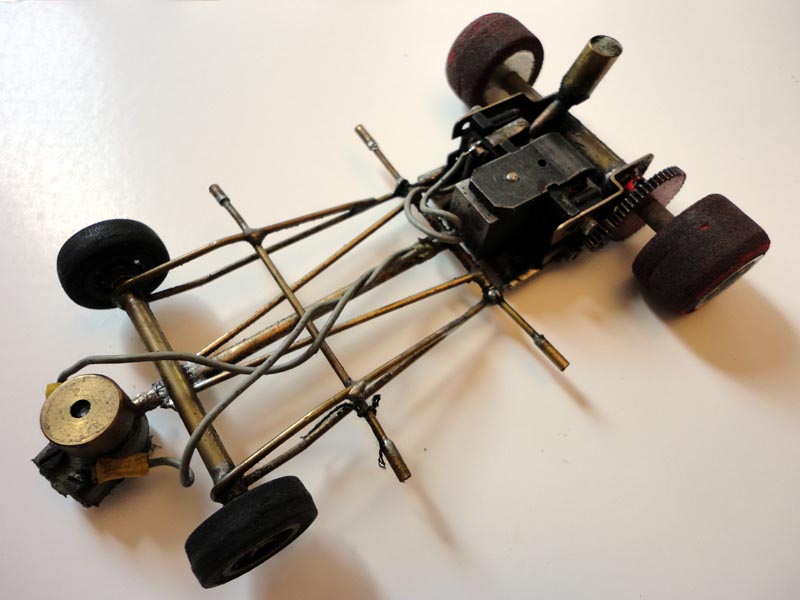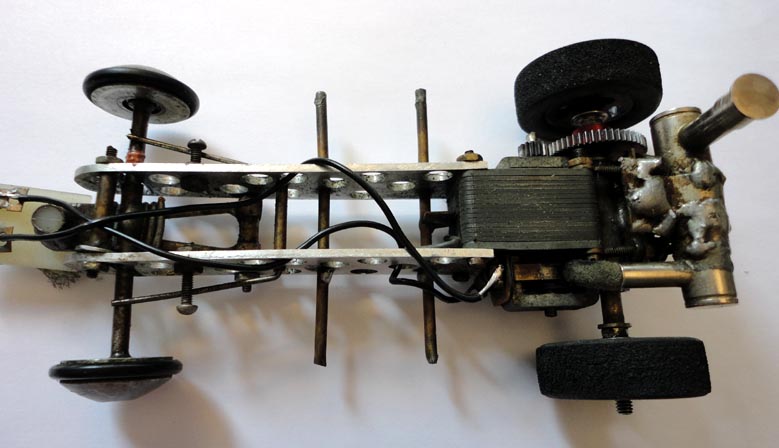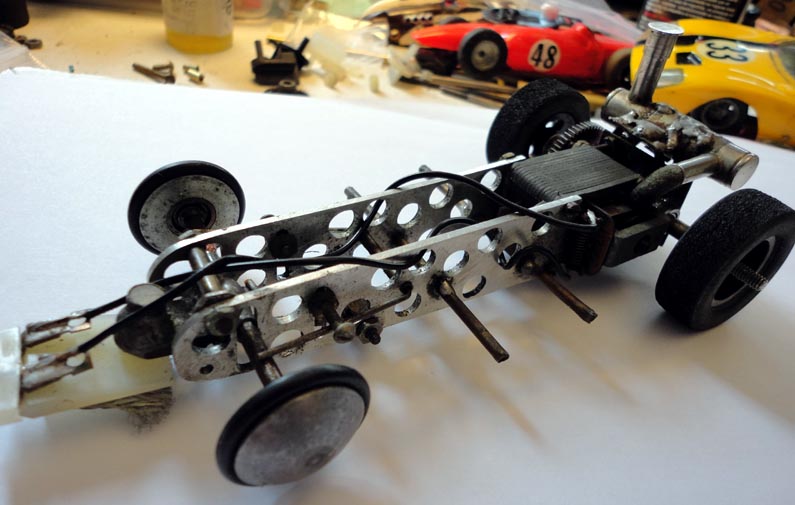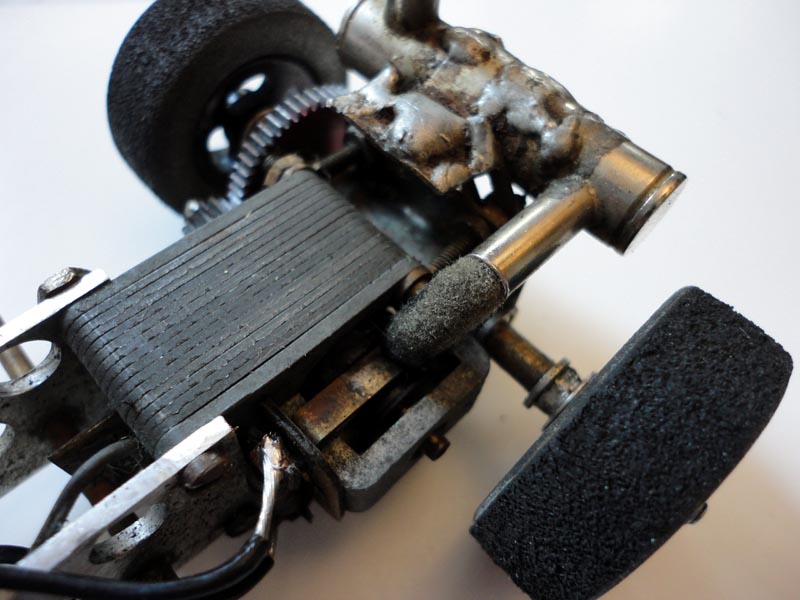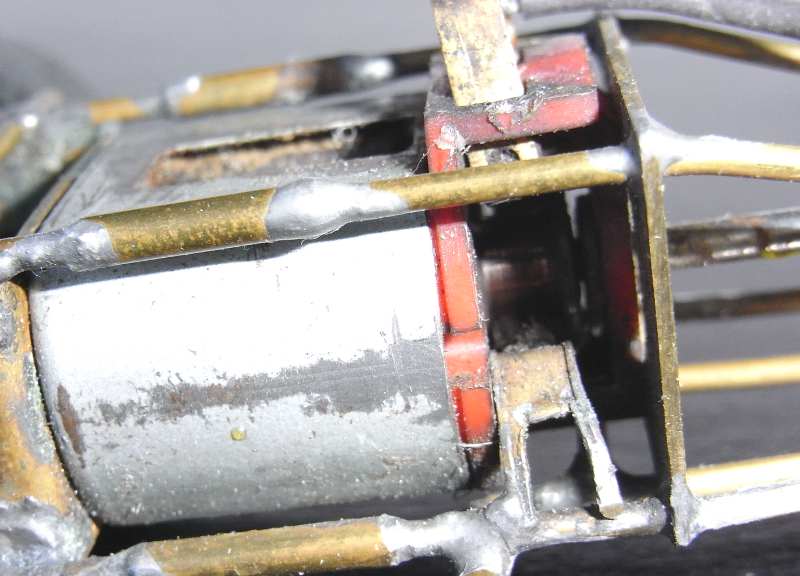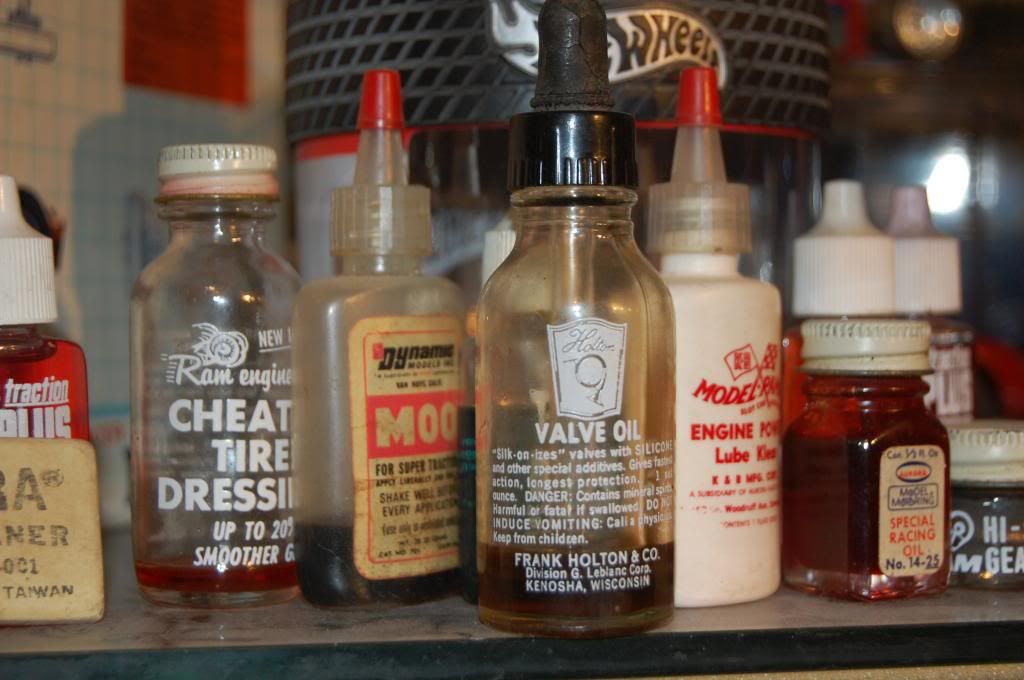The "Wet Wick"
By Don Siegel
The first most of us heard of a "wet wick" was in the May 1966 issue of Rod & Custom, with the now classic report by Gene Husting on the first Rod & Custom Road Race.
So, what was this "wet wick", that could shave a full half-second off lap times? Not to mention letting a Tyco motor, even a hopped-up one with a rewound Pittman DC-65 arm, outpace the rewound Mabuchi…
The idea is to continuously "wet" the commutator with a cleaning fluid (If I remember correctly, the recommended potion was "Horton's trumpet valve oil"). As anybody who uses today's "com drops" knows, this generally produces an instant increase in motor speed, although it soon drops back to normal speed. But what if this product were applied continuously? Lap records!
The concept must have been around for awhile, because the first – and only – commercial product was listed in the preview section of the November 1965 issue of Car Model magazine.
In the report on the first R&C Road Race, it was clearly stated that the rules did not allow the use of a wick. But in the second R&C Road Race, there was once again a Tyco-powered car entered, by one B.G. Denithorne, who finished 4th in the semi (after a run-off) and 5th in the main.
This time, the caption says he used a "wet" Pittman DC-65 armature, and he broke the track record on his qualifying run, the first, although finally qualifying 8th. The first article explains that, "In the future races, wicks without oil tanks will be allowed, so maybe we will be able to have a more varied type of motors."
But B.G.'s Tyco-65X-powered Lotus would be the last non-tin can powered car in this series…
Period cars with wet wicks
Over the years of ebay, I've managed to find two period examples of these kinds of cars.
The first very closely tracks the layout of the two cars entered in the R&C races: a Tyco motor with what looks like a DC-65 arm, Weldun gears, a scratchbuilt chassis with a Kemtron rear end…
On this one, the wick arrangement is home-made, and there is no "tank" for the commutator fluid, just a tube holding the wick, which rides on the commutator. A clean soldering job, very nicely done, with ball bearings on the rear axle, and a cut-down Ford Spyder body….
Not sure if the body or the extra wide rear tread were originally planned on this car, or it they and the tiny front wheels (Cox) were added in a bid to stay competitive.
The other car, a Ford GT, is a rather interesting case. According to the guy who sold me this car on ebay, he did a small production run of this type of car at the time. Given the rather shoddy production, that seems unlikely, but perhaps it was damaged in combat and modified over the years….
This one uses the Concourse Rev-Up Tank, a Pittman DC-65 (X, I assume) sidewinder motor and a homemade magnesium or aluminum frame, plus what I think is a Speedway rear-end setup.
The front axle moves up and down in slots on the chassis, and the wheels are Speedway type drag wheels, with ball bearings in the hub. A Russkit slant guide peeking out the front and fairly approximate soldering and construction all around. Was this at all competitive in the weekly races? We'll probably never know…
After mid-66, with the advent of the rewound Mabuchi, we don't hear any more about wicks, wet or "dry"… So this was a rather short episode in the history of slot racing, one that made a short splash, so to speak, and then disappeared.
Unless, of course, any of you know differently…






